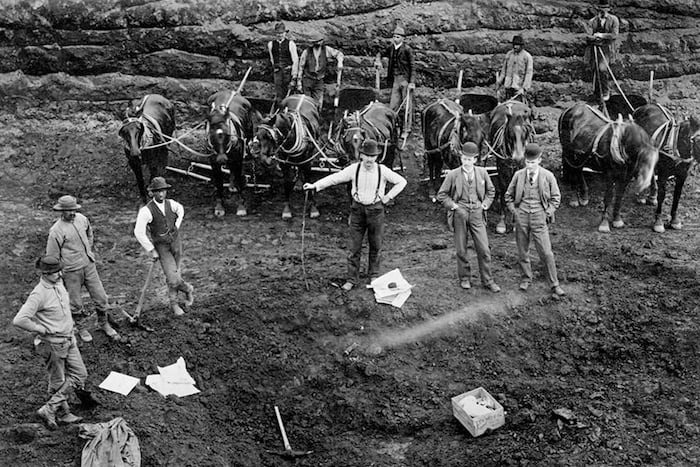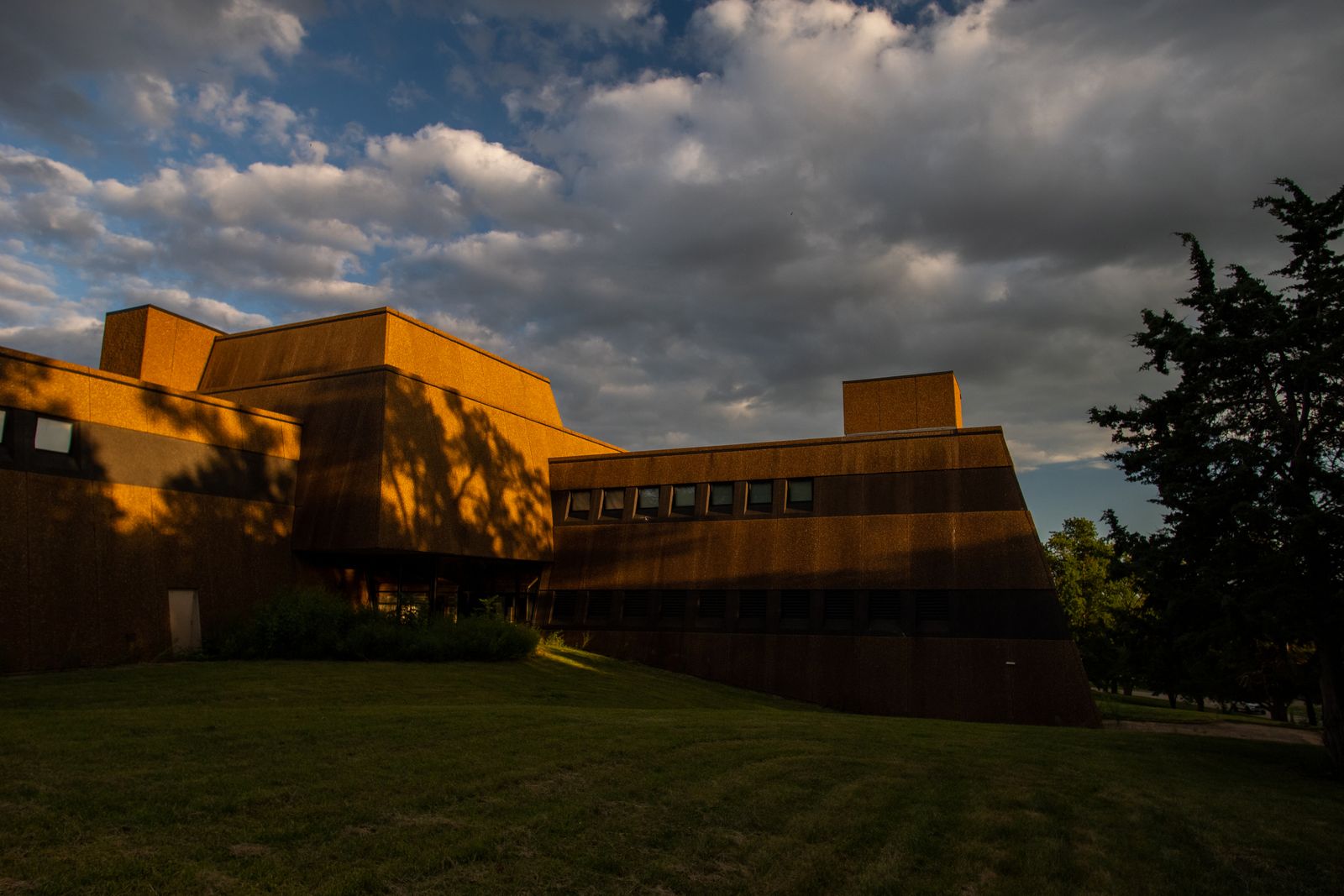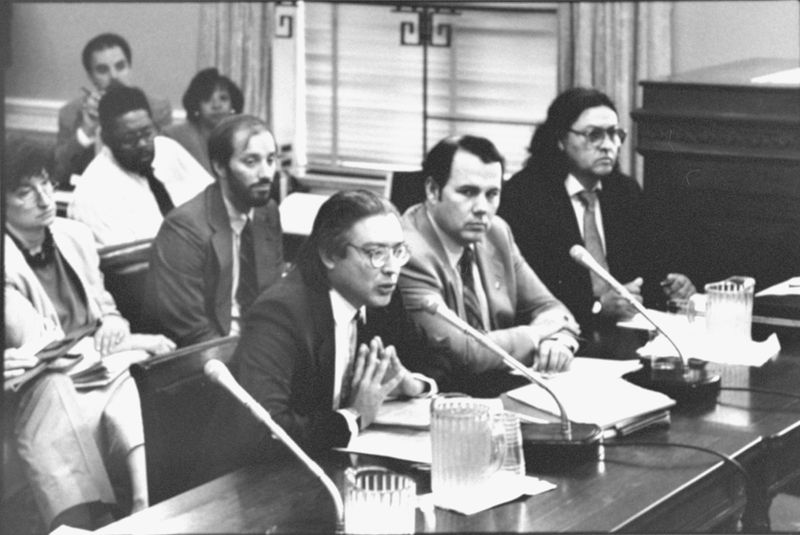University of Nevada, Las Vegas, Department of Anthropology
The Univ. of Nevada, Las Vegas has made available for return 100% of the 113 Native American remains that it reported to the federal government.
Where Native American remains reported by the Univ. of Nevada, Las Vegas were taken from
Timeline of Native American remains made available for return to tribes by the Univ. of Nevada, Las Vegas
How the Univ. of Nevada, Las Vegas compares to other institutions
The Univ. of Nevada, Las Vegas made Native American remains available for return to 150 tribes.
| Tribe | Remains Made Available for Return To |
|---|---|
| Las Vegas Tribe of Paiute Indians of the Las Vegas Indian Colony, Nevada | 81 |
| Moapa Band of Paiute Indians of the Moapa River Indian Reservation, Nevada | 81 |
| Paiute Indian Tribe of Utah | 81 |
| Pyramid Lake Paiute Tribe of the Pyramid Lake Reservation, Nevada | 77 |
| Yerington Paiute Tribe of the Yerington Colony and Campbell Ranch, Nevada | 75 |
| Fort McDermitt Paiute and Shoshone Tribes of the Fort McDermitt Indian Reservation, Nevada and Oregon | 74 |
| Paiute-Shoshone Tribe of the Fallon Reservation and Colony, Nevada | 74 |
| Reno-Sparks Indian Colony, Nevada | 74 |
| Fort Independence Indian Community of Paiute Indians of the Fort Independence Reservation, California | 73 |
| Kaibab Band of Paiute Indians of the Kaibab Indian Reservation, Arizona | 69 |
| Walker River Paiute Tribe of the Walker River Reservation, Nevada | 62 |
| Washoe Tribe of Nevada & California | 59 |
| Te-Moak Tribe of Western Shoshone Indians of Nevada | 54 |
| Colorado River Indian Tribes of the Colorado River Indian Reservation, Arizona and California | 51 |
| Fort Mojave Indian Tribe of Arizona, California and Nevada | 51 |
| Yomba Shoshone Tribe of the Yomba Reservation, Nevada | 49 |
| Duckwater Shoshone Tribe of the Duckwater Reservation, Nevada | 44 |
| Confederated Tribes of the Warm Springs Reservation of Oregon | 39 |
| Eastern Shoshone Tribe of the Wind River Reservation, Wyoming | 38 |
| Shoshone-Bannock Tribes of the Fort Hall Reservation | 37 |
| Confederated Tribes of the Goshute Reservation, Nevada and Utah | 36 |
| Summit Lake Paiute Tribe of Nevada | 34 |
| Winnemucca Indian Colony of Nevada | 34 |
| Shoshone-Paiute Tribes of the Duck Valley Reservation, Nevada | 33 |
| Ely Shoshone Tribe of Nevada | 32 |
| Lovelock Paiute Tribe of the Lovelock Indian Colony, Nevada | 32 |
| Chemehuevi Indian Tribe of the Chemehuevi Reservation, California | 30 |
| Alturas Indian Rancheria, California | 26 |
| Bishop Paiute Tribe | 26 |
| Bridgeport Indian Colony | 26 |
| Cedarville Rancheria, California | 26 |
| Timbisha Shoshone Tribe | 26 |
| Utu Utu Gwaitu Paiute Tribe of the Benton Paiute Reservation, California | 26 |
| Susanville Indian Rancheria, California | 25 |
| Northwestern Band of Shoshoni Nation | 24 |
| San Juan Southern Paiute Tribe of Arizona | 24 |
| Hualapai Indian Tribe of the Hualapai Indian Reservation, Arizona | 23 |
| Buena Vista Rancheria of Me-Wuk Indians of California | 20 |
| Fort McDowell Yavapai Nation, Arizona | 17 |
| Navajo Nation, Arizona, New Mexico and Utah | 15 |
| Quechan Tribe of the Fort Yuma Indian Reservation, California and Arizona | 15 |
| California Valley Miwok Tribe, California | 14 |
| Lone Pine Paiute-Shoshone Tribe | 14 |
| Absentee-Shawnee Tribe of Indians of Oklahoma | 13 |
| Agua Caliente Band of Cahuilla Indians of the Agua Caliente Indian Reservation, California | 13 |
| Bear River Band of the Rohnerville Rancheria, California | 13 |
| Berry Creek Rancheria of Maidu Indians of California | 13 |
| Big Pine Paiute Tribe of the Owens Valley | 13 |
| Big Sandy Rancheria of Western Mono Indians of California | 13 |
| Cabazon Band of Cahuilla Indians | 13 |
| Cachil DeHe Band of Wintun Indians of the Colusa Indian Community of the Colusa Rancheria, California | 13 |
| Cahto Tribe of the Laytonville Rancheria | 13 |
| Cahuilla Band of Indians | 13 |
| Campo Band of Diegueno Mission Indians of the Campo Indian Reservation, California | 13 |
| Capitan Grande Band of Diegueno Mission Indians of California | 13 |
| Cher-Ae Heights Indian Community of the Trinidad Rancheria, California | 13 |
| Chicken Ranch Rancheria of Me-Wuk Indians of California | 13 |
| Cloverdale Rancheria of Pomo Indians of California | 13 |
| Cold Springs Rancheria of Mono Indians of California | 13 |
| Confederated Tribes of Siletz Indians of Oregon | 13 |
| Dry Creek Rancheria Band of Pomo Indians, California | 13 |
| Elem Indian Colony of Pomo Indians of the Sulphur Bank Rancheria, California | 13 |
| Elk Valley Rancheria, California | 13 |
| Enterprise Rancheria of Maidu Indians of California | 13 |
| Ewiiaapaayp Band of Kumeyaay Indians, California | 13 |
| Federated Indians of Graton Rancheria, California | 13 |
| Fort Bidwell Indian Community of the Fort Bidwell Reservation of California | 13 |
| Grindstone Indian Rancheria of Wintun-Wailaki Indians of California | 13 |
| Havasupai Tribe of the Havasupai Reservation, Arizona | 13 |
| Hoopa Valley Tribe, California | 13 |
| Hopi Tribe of Arizona | 13 |
| Hopland Band of Pomo Indians, California | 13 |
| Iipay Nation of Santa Ysabel, California | 13 |
| Inaja Band of Diegueno Mission Indians of the Inaja and Cosmit Reservation, California | 13 |
| Ione Band of Miwok Indians of California | 13 |
| Jackson Band of Miwuk Indians | 13 |
| Jamul Indian Village of California | 13 |
| Karuk Tribe | 13 |
| Kashia Band of Pomo Indians of the Stewarts Point Rancheria, California | 13 |
| Klamath Tribes | 13 |
| Koi Nation of Northern California | 13 |
| La Jolla Band of Luiseno Indians, California | 13 |
| La Posta Band of Diegueno Mission Indians of the La Posta Indian Reservation, California | 13 |
| Los Coyotes Band of Cahuilla and Cupeno Indians, California | 13 |
| Lytton Rancheria of California | 13 |
| Manchester Band of Pomo Indians of the Manchester Rancheria, California | 13 |
| Manzanita Band of Diegueno Mission Indians of the Manzanita Reservation, California | 13 |
| Mechoopda Indian Tribe of Chico Rancheria, California | 13 |
| Mesa Grande Band of Diegueno Mission Indians of the Mesa Grande Reservation, California | 13 |
| Middletown Rancheria of Pomo Indians of California | 13 |
| Mooretown Rancheria of Maidu Indians of California | 13 |
| Morongo Band of Mission Indians, California | 13 |
| Northfork Rancheria of Mono Indians of California | 13 |
| Pala Band of Mission Indians | 13 |
| Paskenta Band of Nomlaki Indians of California | 13 |
| Pauma Band of Luiseno Mission Indians of the Pauma and Yuima Reservation, California | 13 |
| Pechanga Band of Indians | 13 |
| Picayune Rancheria of Chukchansi Indians of California | 13 |
| Pinoleville Pomo Nation, California | 13 |
| Pit River Tribe, California | 13 |
| Potter Valley Tribe, California | 13 |
| Quartz Valley Indian Community of the Quartz Valley Reservation of California | 13 |
| Ramona Band of Cahuilla, California | 13 |
| Redding Rancheria, California | 13 |
| Redwood Valley or Little River Band of the Redwood Valley Rancheria California | 13 |
| Resighini Rancheria, California | 13 |
| Rincon Band of Luiseno Indians | 13 |
| Robinson Rancheria | 13 |
| Round Valley Indian Tribes of the Round Valley Reservation, California | 13 |
| San Pasqual Band of Diegueno Mission Indians of California | 13 |
| Santa Rosa Band of Cahuilla Indians, California | 13 |
| Santa Rosa Indian Community of the Santa Rosa Rancheria, California | 13 |
| Santa Ynez Band of Chumash Mission Indians of the Santa Ynez Reservation, California | 13 |
| Scotts Valley Band of Pomo Indians of California | 13 |
| Soboba Band of Luiseno Indians, California | 13 |
| Sycuan Band of the Kumeyaay Nation | 13 |
| Table Mountain Rancheria | 13 |
| Tejon Indian Tribe | 13 |
| Tolowa Dee-ni' Nation | 13 |
| Torres Martinez Desert Cahuilla Indians, California | 13 |
| Tule River Indian Tribe of the Tule River Reservation, California | 13 |
| Tuolumne Band of Me-Wuk Indians of the Tuolumne Rancheria of California | 13 |
| Twenty-Nine Palms Band of Mission Indians of California | 13 |
| United Auburn Indian Community of the Auburn Rancheria of California | 13 |
| Wilton Rancheria, California | 13 |
| Wiyot Tribe, California | 13 |
| Yocha Dehe Wintun Nation, California | 13 |
| Yuhaaviatam of San Manuel Nation | 13 |
| Yurok Tribe of the Yurok Reservation, California | 13 |
| Burns Paiute Tribe | 12 |
| Skull Valley Band of Goshute Indians of Utah | 12 |
| Ak-Chin Indian Community | 11 |
| Cocopah Tribe of Arizona | 11 |
| Fort Sill Apache Tribe of Oklahoma | 11 |
| Gila River Indian Community of the Gila River Indian Reservation, Arizona | 11 |
| Kickapoo Tribe of Oklahoma | 11 |
| Mescalero Apache Tribe of the Mescalero Reservation, New Mexico | 11 |
| Pascua Yaqui Tribe of Arizona | 11 |
| Salt River Pima-Maricopa Indian Community of the Salt River Reservation, Arizona | 11 |
| San Carlos Apache Tribe of the San Carlos Reservation, Arizona | 11 |
| Tohono O'odham Nation of Arizona | 11 |
| Tonto Apache Tribe of Arizona | 11 |
| Ute Indian Tribe of the Uintah and Ouray Reservation, Utah | 11 |
| Ute Mountain Ute Tribe | 11 |
| White Mountain Apache Tribe of the Fort Apache Reservation, Arizona | 11 |
| Yavapai-Apache Nation of the Camp Verde Indian Reservation, Arizona | 11 |
| Yavapai-Prescott Indian Tribe | 11 |
| Coyote Valley Band of Pomo Indians of California | 4 |
| Kletsel Dehe Wintun of the Cortina Rancheria | 4 |
| Northern Arapaho Tribe of the Wind River Reservation, Wyoming | 1 |
The Univ. of Nevada, Las Vegas reported making 100% of more than 100 associated funerary objects available for return to tribes.
Know how an institution is handling repatriation? Have a personal story to share? We'd like to hear from you.
Watch an informational webinar with our reporters.
This tool presents a dataset maintained by the National Park Service containing all the Native American human remains and associated funerary objects that institutions have reported to the federal government under the Native American Graves Protection and Repatriation Act. The dataset includes information about the state and county where remains and objects were taken from, which institutions hold them and whether they have been made available for return to tribes.
The data is self-reported by institutions. The amount of unrepatriated Native American remains reported by institutions is a minimum estimate of individuals and institutions frequently adjust these numbers when they reinventory groups of remains. Some institutions that are subject to NAGPRA have also entirely failed to report the remains in their possession. As a result, the numbers provided are best taken as estimates. The actual number and geographic scope of what’s held by publicly funded institutions is larger than what is presently documented.
ProPublica supplemented this dataset with information about cultural affiliation and disposition to specific tribes by systematically parsing the text of Notices of Inventory Completion published in the Federal Register. An additional dataset from the Department of Housing and Urban Development, the Tribal Directory Assessment Tool, was used for the section on remains not made available for return from counties that each tribe has indicated interest in to the federal government.
Institution location and tribal headquarters location information was provided by National NAGPRA. The location of some groups that are not federally recognized was provided through research by ProPublica.
Institutions that are part of a larger entity are grouped. (For example, the Mesa Verde National Park is part of the U.S. Department of the Interior.)
Institutions that have not submitted information to the federal government are not listed. The Smithsonian Institution is not listed because its repatriation process falls under the National Museum of the American Indian Act and it is not required to publicly report its holdings with the same detail as institutions subject to NAGPRA.
If you work for an institution and would like to provide comment on your institution’s repatriation efforts, please email [email protected]. If you think the data is incorrect or have a data request, please get in touch. We are aware of some issues with the accuracy of location information and tribes mistakenly being identified for disposition of Native American remains in published notices.
If you want to share something else with ProPublica, we’d like to hear from you.
If you have questions about implementing or complying with the Native American Graves Protection and Repatriation Act, get in touch with National NAGPRA or the NAGPRA Community of Practice.
We use the word “tribes” to refer to all groups that institutions made Native American remains available to under NAGPRA. This includes tribes, nations, bands, pueblos, communities, Native Alaskan villages, Native Hawaiian organizations and non-federally recognized groups.
Data sources from Department of the Interior, National Park Service, National NAGPRA Program, the Federal Register, Department of Housing and Development, Tribal Directory Assessment Tool


